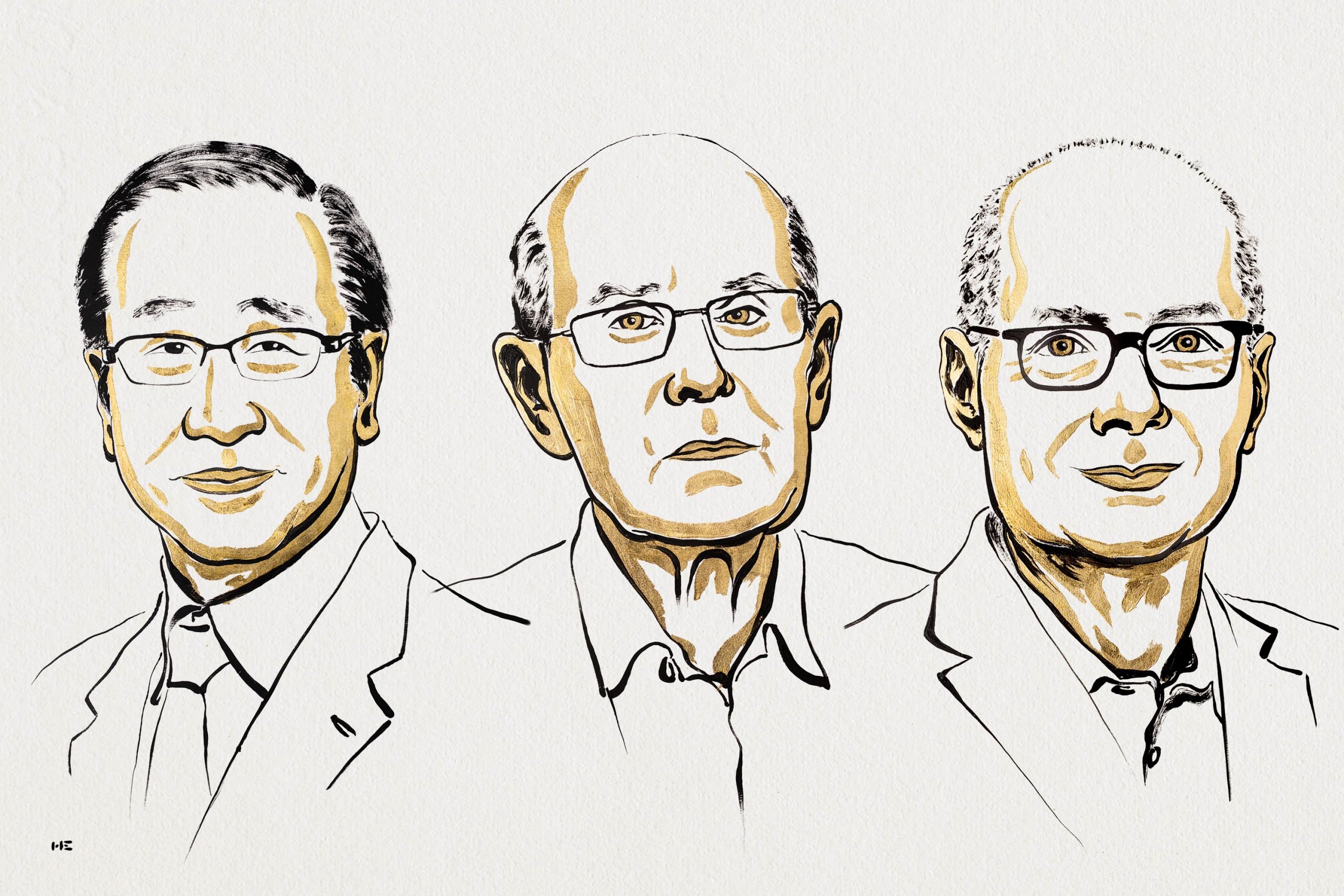In a scientific breakthrough that bridges molecular design with planetary-scale problems, the 2025 Nobel Prize in Chemistry has been awarded to Susumu Kitagawa, Richard Robson, and Omar Yaghi. Their pioneering work on metal organic frameworks (MOFs) molecular constructions with vast internal spaces has opened new frontiers in chemistry, materials science, and environmental technology.
At first glance, the idea seems almost paradoxical: solids with the architecture of air. But that’s exactly what these scientists have created rigid crystalline structures so porous that gases and other molecules can pass freely through them. These frameworks act like molecular-scale rooms, tailored to trap, store, or transform specific chemicals.
It all began in 1989, when Richard Robson experimented with linking copper ions to a four-armed organic molecule. The resulting structure formed an elegant, diamond-like crystal packed with tiny cavities. Although this early version was unstable, it hinted at a powerful new concept: that metal ions and organic linkers could be combined to create customizable, porous frameworks.
Building on this, Susumu Kitagawa and Omar Yaghi independently refined and expanded the concept during the 1990s and early 2000s. Kitagawa demonstrated that these frameworks could absorb and release gases, behaving almost like sponges at the molecular level. Yaghi, meanwhile, developed MOFs that were not only stable but could also be designed rationally engineered with precision to have specific chemical properties.
Today, MOFs number in the tens of thousands. They are being explored for use in water harvesting from arid desert air, capturing carbon dioxide to combat climate change, storing toxic gases safely, and even catalyzing complex chemical reactions. Recent innovations include using MOFs to break down persistent pollutants like PFAS, or to purify water contaminated by pharmaceuticals.
These molecules may be invisible to the naked eye, but their impact is anything but small. In awarding this year’s chemistry prize, the Nobel Committee has recognized not only a transformative scientific achievement, but a set of tools with the potential to help solve some of humanity’s most urgent environmental and technological challenges.
As we face a future defined by climate pressures and resource scarcity, the work of Kitagawa, Robson, and Yaghi reminds us that sometimes, the biggest solutions begin with building room to breathe at the tiniest possible scale.
